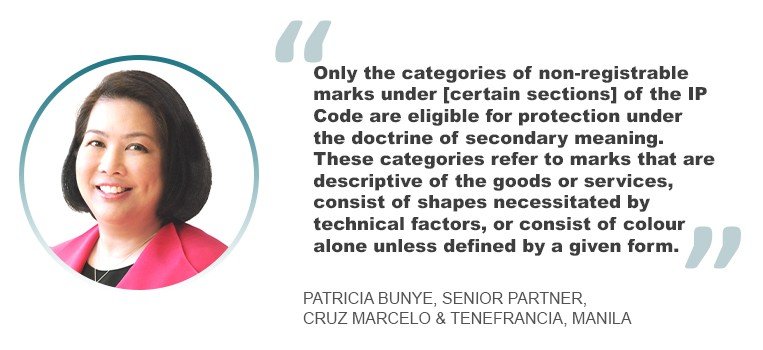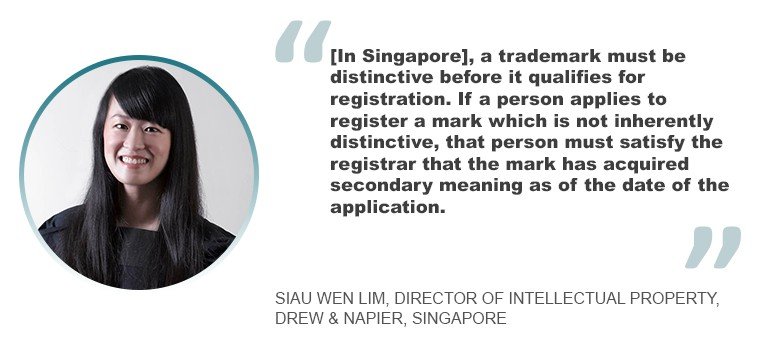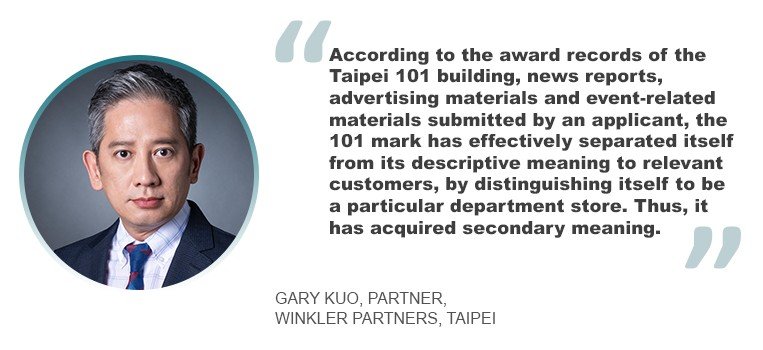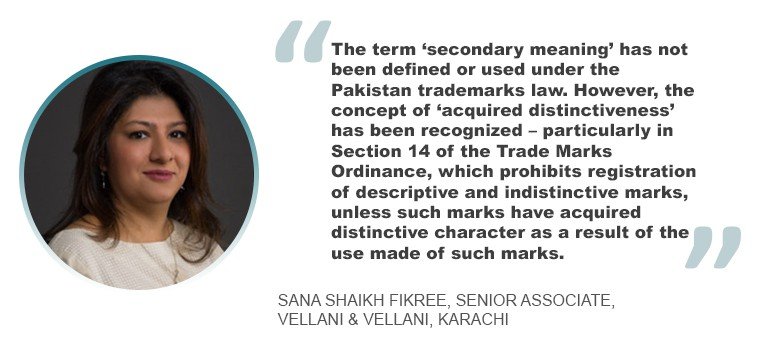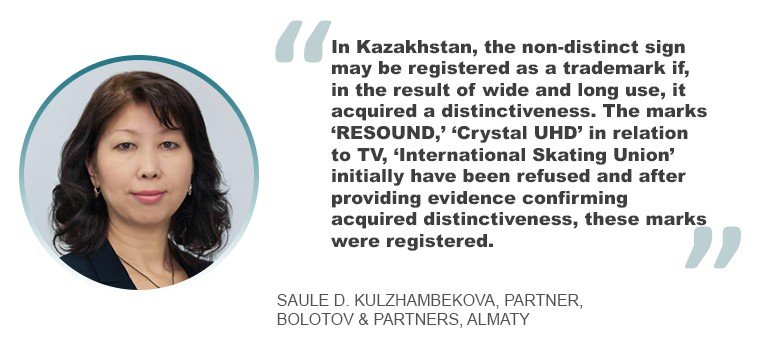“In Kazakhstan, it is indicated as acquired distinctiveness,” said Saule D. Kulzhambekova, a partner at Bolotov & Partners in Almaty. “The non-distinct sign may be registered as a trademark if in the result of wide and long use, it acquired a distinctiveness.”
She added: “The marks ‘RESOUND,’ ‘Crystal UHD’ in relation to TV, ‘International Skating Union’ initially have been refused and after providing evidence confirming acquired distinctiveness, these marks were registered.”
Determining the existence of secondary meaning
According to Kulzhambekova, secondary meaning is determined “in the results of wide and long use.” In Taiwan, whether a mark has acquired secondary meaning is determined by the perception of consumers, said Kuo.
The following are guidelines from TIPO, the Taiwan Intellectual Property Office, for determining whether a mark has acquired a secondary meaning:
- The length of time the trademark has been used. The longer the time of usage, the more likely it is to acquire secondary meaning.
- Sales volume, turnover and market share. The larger the sales volume and turnover, and the higher the market share, the more likely it is to acquire secondary meaning.
- Advertising volume, advertising costs and promotional activities. The larger the advertising volume, the higher the advertising costs and the more promotional activities, the more likely it is to acquire secondary meaning.
- Sales area, market distribution and sales outlets or exhibition display sites. The larger the sales area, the wider the market distribution and the more outlets and exhibition display locations, the more likely it is to garner secondary meaning.
- Market survey reports.
- News or media reports.
- Certificates issued by institutions, such as chambers of commerce or trade unions, among others.
“These factors are not considered separately, but are taken into account as a whole,” said Kuo.
However, he also added that even if a mark has acquired secondary meaning, it cannot be registered if it is a generic mark or a term that competitors in the industry must use to designate their goods or services as provided in Article 29 (1)(2) of Taiwan’s Trademark Act.
“To protect fair competition in the market and prevent a single party from monopolizing the use of a mark, the Trademark Act does not allow claims for exclusive rights over a generic mark,” he said.
“To determine if a mark has acquired secondary meaning, it must be shown that by reason alone of the mark, consumers perceive the goods or services in question as emanating from a particular trader. This is typically demonstrated through significant use or promotion of the mark in the country in which the trademark owner is seeking to prove that the mark has acquired secondary meaning,” said Lim.
According to Fikree, Pakistani law doesn’t have a mechanism or criteria for determining whether a mark has taken on a secondary meaning or acquired distinctiveness. But as a matter of practice, at least three years of use of the said mark is required to determine the claim of secondary meaning and/or acquired distinctiveness.
For a mark to assume a secondary meaning, the brand owner must also show proof of extensive use and widespread advertisements featuring the given mark. It will have to be shown that because of continuous and extensive use, “the descriptive or indistinctive nature of the said mark has been submerged, and the owner has managed to create a secondary meaning for the mark in the eyes of consumers.”
Fikree added that to prove that a mark has acquired distinctiveness, brand owners are required to file evidence composed of sales invoices, samples of promotional materials and proof of editorial coverage, among others. Courts are also likely to consider the length and manner of use of the mark and the extent/reach of promotional campaigns.
“Where marks secure registration, in breach of the provisions of Section 14 of the Trade Marks Ordinance, this may serve as a basis for an invalidation action against such mark. However, marks which have acquired a distinctive character or secondary meaning through use post registration are likely to defeat such invalidation action,” she said.
As for the IP Code of the Philippines, Bunye said: “The IP Code states that such evidence includes proof of substantially exclusive and continuous use of the mark by the applicant in commerce in the Philippines for five years before the date on which the claim of distinctiveness is made. Under the ASEAN Common Guidelines for the Substantive Examination of Trademarks, some of the kinds of evidence of distinctiveness include figures of turnover and sales of the product with the mark in the country, figures of investment in advertising the mark in the country as well as consumer and market surveys about the products or services bearing the mark.”
She added that secondary meaning usually comes into play for marks that have long been used but never registered. However, that a certain mark has acquired secondary meaning may be difficult to establish.
“The Supreme Court of the Philippines has rejected claims of secondary meaning for failure to provide such proof. For example, in the Shang Properties Realty Corporation v. St. Francis Development Corporation case, the Supreme Court ruled that the ‘St. Francis’ mark had not acquired secondary meaning as it had only ever been used with respect to the property on St. Francis Avenue and St. Francis Street, and there was no proof of substantial commercial use,” explained Bunye. “In light of this, secondary meaning should only be relied upon when there is no other choice. Businesses should aim to use inherently registrable trademarks and apply for trademark registration as soon as possible.”



